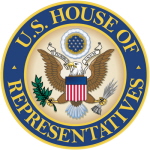How Competitive Are U.S. House Special Elections?
Special elections are 17.4 points more competitive than general election contests; special election seats are also 4 times more likely to switch parties

Special elections are frequently marred by low voter turnout, and, with the exception of the special election contest in New York’s 23rd CD last November, most seem to fly under the national radar.
However, a Smart Politics analysis of the nearly three-dozen special election contests that have been conducted since new district lines went into effect in 2002 finds that special elections are nearly 20 points more competitive than general election contests for those districts, provide a much higher percentage of ‘nail-biter’ finishes, and are four times more likely to see a change in party control of the district than general election contests.
Smart Politics examined the margin of victories for the 32 special elections that have been conducted from 2002 through the special election in Florida’s 19th CD last month and compared them to the average margin of victory for those respective districts in general election contests since 2002.
The average margin of victory in general election races for these 32 districts was 43.3 points since redistricting in 2002. The average margin of victory in special election races, however, was 25.9 points, or 17.4 points more competitive.
For example, the average victory margin in general elections for New York’s 20th CD since 2002 has been 27.8 points. The March 31, 2009 contest won by Democrat Scott Murphy to replace Kirsten Gillibrand, however, was decided by just 0.5 points, or 27.3 points more competitive.
Or take California’s 10th CD, overshadowed by the drama surrounding New York’s 23rd CD last November. California CD-10 has had an average victory margin of 37.5 points across the last four general elections, but Democrat John Garamendi won by just 10.0 points in the recent special election, or a 27.5-point more competitive decision.
Of course, one of the reasons why special election races are more competitive than general election races is that, by definition, they are open seat contests.
Smart Politics therefore also examined the difference between the margin of victory for the nearly 160 open seat general election races since 2002, and the margin of victory for those districts with incumbents on the ballot.
Districts with open seats in general election races had an average victory margin of 21.5 points. The average margin of victory for these same U.S. House districts with incumbents on the ballot since 2002 has been 36.5 points, or a 15.0-point differential.
Special election races have therefore seen a greater move towards competitive races (with a 17.4-point narrower average margin of victory) than open seat general election contests (with a 15.0-point narrower average margin of victory).
Special elections have also provided much more dramatic races upon examining the percentage of contests decided by less than 10 points:
· Since 2002, 3 in 8 special elections to the U.S. House (12 of 32, 37.5 percent) have been decided by less than 10 points.
· Less than 3 in 10 open general election contests (46 of 157, 29.2 percent) have been decided by less than 10 points.
· And less than 1 in 10 of all general election races (169 of 1,740, 9.7 percent) have been won by less than 10 points.
U.S. House Races Decided by Less than 10 Points Since 2002 by Type of Election
|
Election type
|
< 10 points
|
Percent
|
|
Special
|
12 of 32
|
37.5
|
|
Open general
|
46 of 157
|
29.2
|
|
All general
|
169 of 1,740
|
9.7
|
Data compiled by Smart Politics.
Special elections are also much more likely to shake up the composition of the U.S. House.
Since 2002, U.S. House seats on the ballot in special election contests are four times more likely to see the seat switch parties (18.8 percent, 6 of 32) than seats on the ballot in general election contests (4.7 percent, 82 of 1,740).
Open seat general election contests have been even more likely to switch parties (40 of 146 races since 2002, or 27.4 percent). However, this is partially explained by the fact that these districts have begun with a baseline that is seven points more competitive than those districts in which special elections have happened to occur.
Follow Smart Politics on Twitter.
